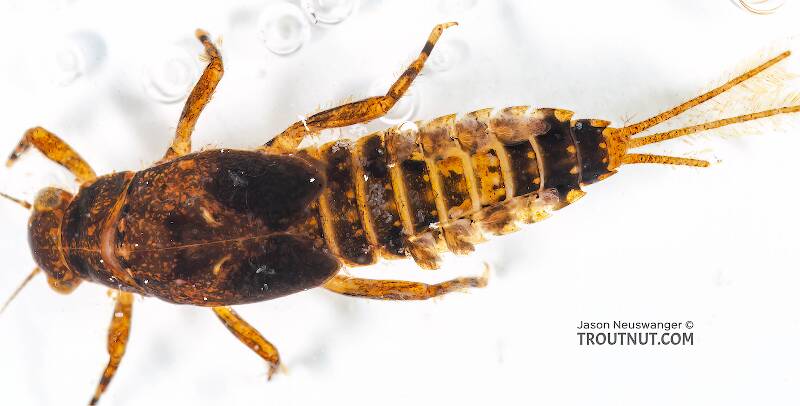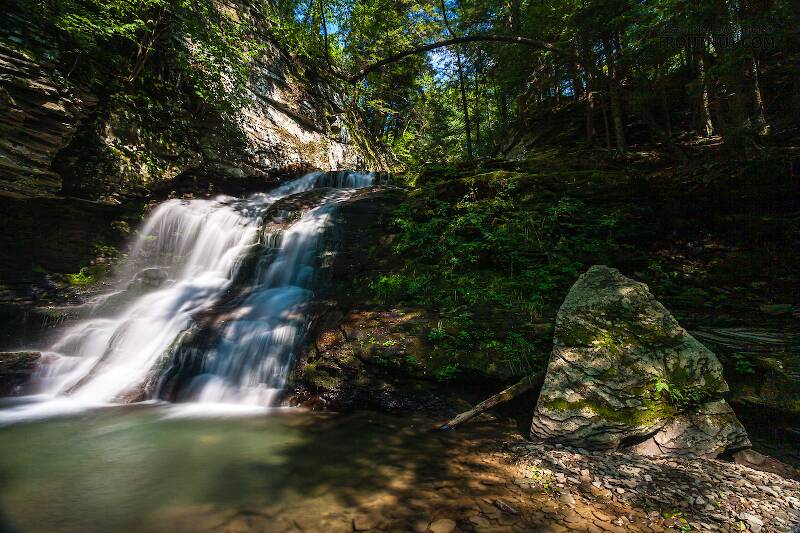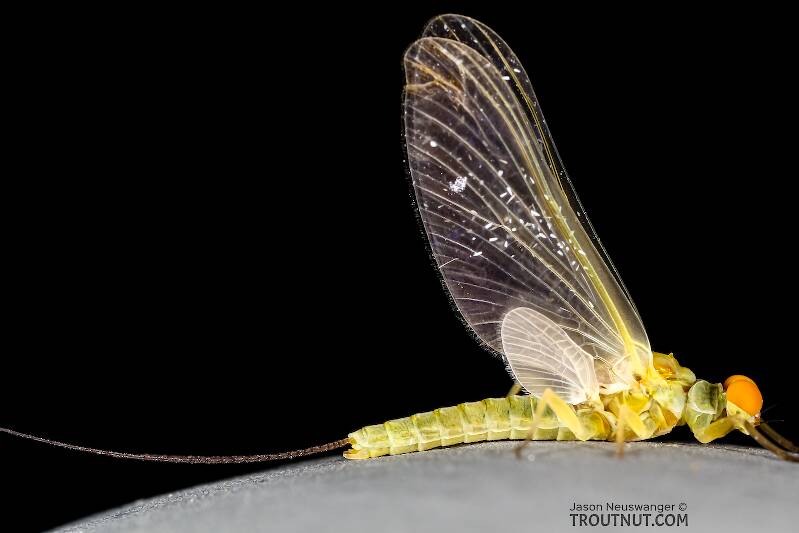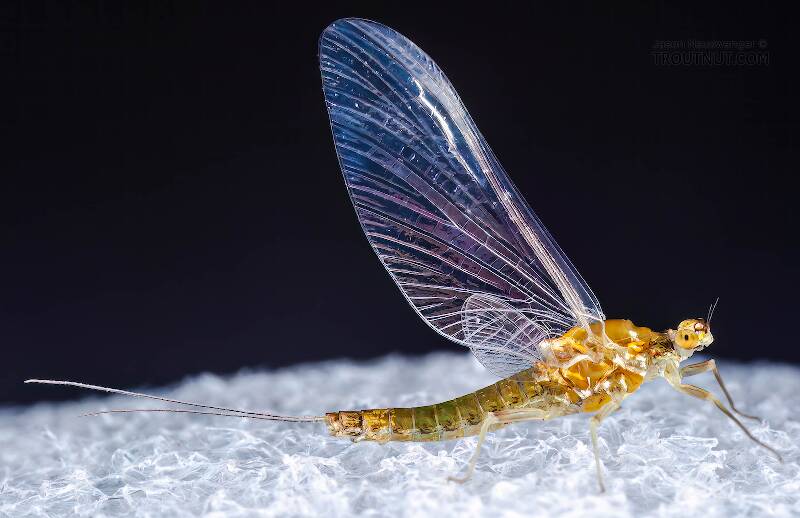
Blue-winged Olives
Baetis
Tiny Baetis mayflies are perhaps the most commonly encountered and imitated by anglers on all American trout streams due to their great abundance, widespread distribution, and trout-friendly emergence habits.

Pale Morning Duns
This name used to refer to two now defunct species, Ephemerella inermis and Ephemerella infrequens. The inermis mayflies were discovered to be the same species as Ephemerella excrucians and now they bear that scientific name. The infrequens species was recently reclassified as a subspecies of Ephemerella dorothea.
Anglers usually shorten the Pale Morning Dun hatch to the PMD hatch. The PMD is one of the top mayflies referenced in fly shops and hatch charts across the West, although they occur in the Midwest as well. Given this popularity, it is surprising that so many fly patterns meant to imitate PMDs, and so many fly tying materials (especially body materials) designed around them, are the wrong color: yellow. Every Ephemerella excrucians specimen I've sampled has been a pale green that couldn't even slightly be mistaken for yellow. The only place I've seen this reflected in imitations was in dubbing sold under René Harrop's name for the PMDs on the Henry's Fork, which has a proper greenish tint.
Like most common names,"Pale Morning Dun" can refer to more than one taxon. They're previewed below, along with 6 specimens. For more detail click through to the scientific names.
Mayfly Species Ephemerella dorothea infrequens
This taxon used to be considered the separate species Ephemerella infrequens, but entomologists now regard it as a subspecies together with the small eastern Pale Evening Dun hatch Ephemerella dorothea dorothea. There is another related listing of significance common in California and the Southwest that has undergone revision. The large (often exceeding 10 mm) Ephemerella mollitia is now considered synonymous with d. infrequens.
While it is not the normal policy of TroutNut to list subspecies as separate taxa, d. infrequens and d. dorothea are so important and distinct from each other in terms of geography, appearence, and angling tradition that they warrant an exception.
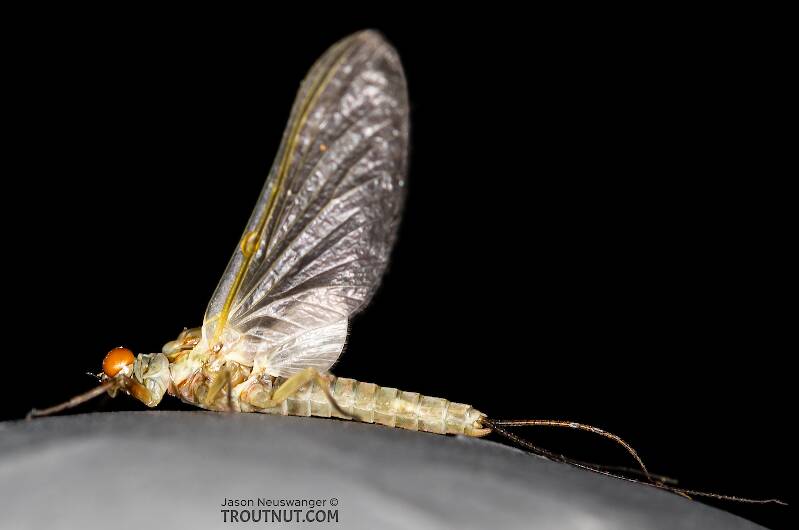
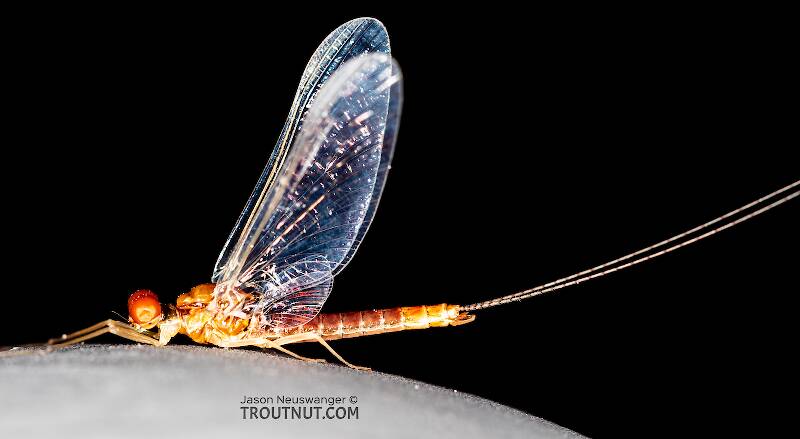
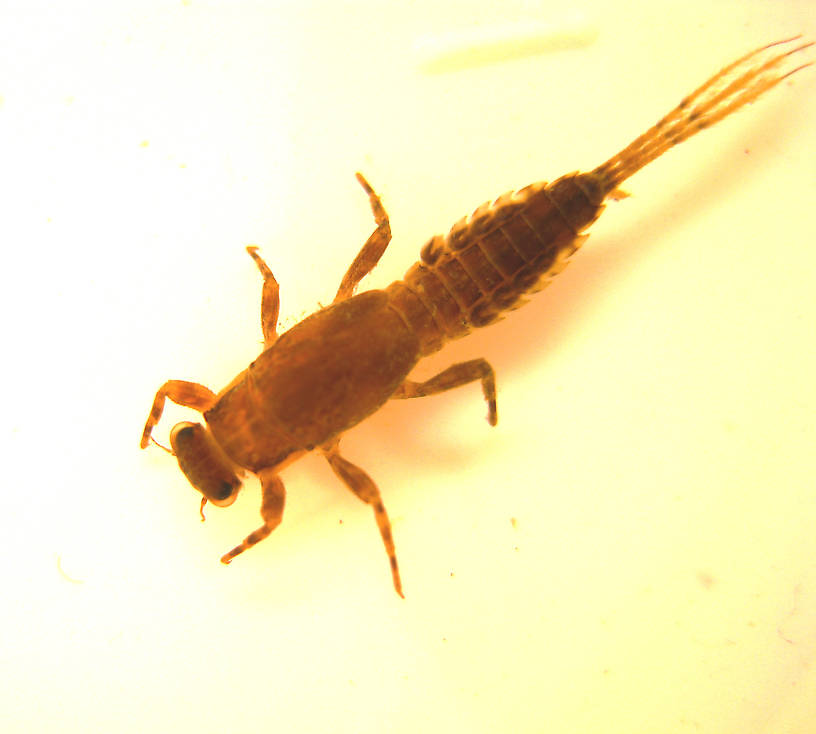
Size: 8.5 mm. Mature specimens have been captured as large as 10.5 mm.
Emergence schedule: Variable - starting as early as mid March and lasting as late as early June, depending on the year. Usual duration is at least several weeks or more.
Dun Association: Body is elusive pale creamy yellow w/ orange highlights, cream legs and tails, and dun wings
Specimen status in photo: Preserved
Collection method: Kick net
Comments: Extremely common in samples taken from this location. It's color in life was very close to as depicted in the photo; except for the gradual darkening of the abdominal segments as they progress posteriorly, which has been accentuated somewhat by the effects of preservation. Adult association is based upon capture of this taxon at various stages of emergence including: darkened wingcases, split thoraxic notums, and partially ecloded or ''stillborn'' specimens.
Entoman
Mayfly Species Ephemerella excrucians
Ephemerella excrucians or Pale Morning Dun usually follows its larger sibling Ephemerella dorothea infrequens with which it shares the same common name. What it often lacks in size by comparison is made up for with it's duration, often lasting for months with intermittent peaks. This close relationship with infrequens has led many anglers to confuse Pale Morning Dun biology with that of the multivoltine Baetidae species, having disparate broods that decrease in size as the season advances. Sharing the same common name has not helped to alleviate this misconception.
Until recently, Ephemerella excrucians was considered primarily an upper MidWestern species of some regional importance commonly called Little Red Quill among other names. Recent work by entomologists determined that it is actually the same species as the important Western Pale Morning Dun (prev.Ephemerella inermis), and the lake dwelling Sulphur Dun of the Yellowstone area, (prev.Ephemerella lacustris). Since all three are considered variations of the same species, they have been combined into excrucians, being the original name for the type species reported as far back as the Civil War. Angler speculation had simmered for some time that the stillwater loving Ephemerella lacustris was much more widespread, inhabiting more water types then previously thought and could account for many large sulfurish ephemerellids found in still to very slow water locations throughout the West. With the revisions, this discussion is now moot.
Ephemerella excrucians variability in appearance, habitat preferences, and wide geographical distribution are cause for angler confusion with the changes in classification. They can be pale yellow 18's on a large Oregon river, creamy orange 14's on western lakes and feeder streams, large olive green on CA spring creeks as well as tiny sulfur ones in many Western watersheds. Then there's the little Red Quill on small streams in Wisconsin. Yet, all are the same species.
